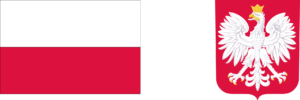Poland has quietly advanced a robust strategy of accumulating gold in its foreign-exchange reserves, a move that has become increasingly significant both domestically and internationally as gold prices rise and geopolitical tensions intensify. The central player in this effort is the Narodowy Bank Polski (NBP), which over the past several years has substantially expanded Poland’s gold holdings. Where in the 1990s the NBP held only a few dozen tonnes, by March 2025 Poland’s officially reported gold reserves reached over 515 tonnes, representing roughly 22 % of the bank’s total reserves.
The decision to elevate gold’s share in the reserve portfolio reflects multiple strategic imperatives. First, gold’s appeal as a safe-haven asset has grown in an era of elevated inflation, currency volatility and pandemic- or war-driven uncertainty. The chairman of the NBP, Adam Glapiński, has described gold as a “shield against global instability and a cornerstone of economic sovereignty”. Poland’s accumulation also coincides with a rising global trend: central banks worldwide have quietly ramped up gold purchases, partly in response to concerns over over-exposure to major reserve currencies and the potential of Western financial sanctions.
From a domestic policy perspective, the NBP’s target of bringing gold to around 20 % of its reserves appears to have been achieved by mid-2025, with official statements indicating the strategy had been “completed” when gold reached approximately 22.4 % of total reserves and a value of USD 54.6 billion at the end of May. The pace of accumulation has been especially sharp since 2018; for example, the NBP reports having bought over 412 tonnes of gold since then.
The rising price of gold has amplified the significance of this strategic reserve build-up. Because the increase in value of the existing gold holdings is recorded through revaluation (not past purchases), the NBP has reported large unrealised gains in its balance sheet, reflecting the 15 % or more rise in the local-currency price of bullion. Polskie Radio online+1 Although these are paper gains and the bank has explicitly stated that it does not plan to sell its gold holdings, the increased value strengthens the polish financial position and enhances the credibility of the złoty and the country’s macro-financial stability.
Another dimension of the strategy is storage and diversification of location. The NBP has indicated that only around 20 % of its gold is stored in Poland, with the remainder held abroad in trusted financial centres such as New York and London. In the longer term, the bank aims to distribute its holdings equally across three locations for security reasons.
However, the strategy is not without questions and trade-offs. Gold is non-yielding, meaning it does not generate interest or dividends, and storing large amounts has associated costs and operational risks. Moreover, the accumulation of gold does not directly enhance productive investment or fiscal capacity; it is primarily a stability device and reserve buffer. Some analysts also caution that once the target share is hit, further accumulation yields diminishing marginal utility. At the same time, the rising price of gold may eventually make further large purchases less cost-efficient, causing central banks to moderate acquisition pace — and indeed, global data showed a slowdown in monthly purchases in April 2025.
In the Polish context, the accumulation of gold is also a sign of the country’s strategic positioning. In a region affected by geopolitical uncertainty — with Russia’s war in Ukraine to Poland’s east and shifting dynamics within the EU and NATO — the accumulation can be viewed as part of a broader hedge against possible external shocks to currency, financial sanctions or disruptions of financial flows. The fact that Poland’s gold holdings now exceed those of the European Central Bank (ECB) — roughly 506.5 tonnes — is symbolic: the NBP announced in May 2025 that its holdings had reached about 509 tonnes, surpassing the ECB’s figure.
Looking ahead, the strategy begs two key questions: whether Poland will continue to accumulate beyond its current target of around 20 % of reserves, and how the value of gold will behave in a changing global environment of inflation, interest rates and currency dynamics. The current record high prices for gold reflect both inflation hedging needs and safe-asset demand; but if inflation moderates and global interest rates fall, gold’s relative attractiveness may shift. Nonetheless, for now Poland’s gold reserves stand as a strategic anchor for its financial stability, a tangible symbol of sovereignty, and an insurance policy against future turbulence.
In sum, Poland’s gold-reserve strategy is driven by a blend of macro-financial prudence, geopolitical hedging and stable reserve diversification. As prices climb and central banks adjust their reserve compositions, Poland’s early and purposeful accumulation of gold positions it more robustly than many peers — but also underscores the ongoing challenge of managing non-yielding assets in an evolving reserve-management paradigm.






